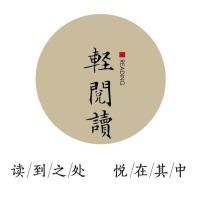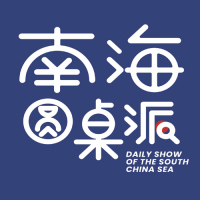Can the US Tariff Offensive Against Southeast Asia Succeed?
Recently, US President Donald Trump signed an executive order announcing that, starting August 7, over 60 US trade partners will face new tariff standards. Among Southeast Asian countries, Myanmar and Laos will be subject to a 40% “reciprocal tariff” rate, while the Philippines, Thailand, and Cambodia will face a 19% rate, and Vietnam 20%.
What impact will these tariffs have on the economies of Southeast Asian nations? How might the economic landscape and industrial supply chains in Southeast Asia and the broader Asia-Pacific region shift as a result? To explore these questions, VSCS South China Sea Roundtable interviewed Luo Yongkun, a research fellow at the Institute of International Relations, Shanghai Academy of Social Sciences.

The Calculation Behind Trump’s “Tailored” Tariff Strategy
VSCS: The US has imposed differentiated tariffs on Southeast Asian countries and is pressuring them to open up their markets. What is the strategic intent behind this approach?
Luo Yongkun: The US tariff policy serves as both an economic strategy and a geopolitical tool. First, through differentiated tariffs, such as exerting pressure on surplus countries like Vietnam and Thailand, and imposing punitive rates on smaller economies like Myanmar and Laos, the US aims to directly reduce its trade deficit. At the same time, it forces Southeast Asian countries to unilaterally open their agricultural and light industry markets, squeezing the domestic industries of nations like Cambodia and Laos. Second, it’s about competing for regional economic dominance. By using tariffs to intervene and reshape key supply chains, such as leveraging Indonesia’s nickel resources to capture the new energy supply chain, the US also seeks to undermine the competitive edge of Malaysia and the Philippines in the electronics sector.
VSCS: Trump has announced that the US will impose a 40% tariff on goods from other countries that are rerouted through Southeast Asian nations to enter the US, the so-called “transshipment clause.” Is this clause targeting China? What’s your view on its purpose?
Luo Yongkun: It’s fair to say that Trump is trying to use economic coercion to undermine cooperation between China and Southeast Asia. However, China and ASEAN have already established mechanisms such as the China-ASEAN Free Trade Area and RCEP, and are moving toward upgrading to Free Trade Area 3.0. This momentum of economic integration is unlikely to be disrupted by unilateral tariffs. Southeast Asian countries are generally unwilling to accept the US “transshipment clause,” as it not only affects their close economic ties with China but also impacts trade with other countries. They now face a dilemma: needing to avoid US pressure while also maintaining cooperation with China and advancing economic diversification.

On September 24, 2024, the 21st China-ASEAN Expo and China-ASEAN Business and Investment Summit opened in Nanning, Guangxi.
How Will Southeast Asian Countries Respond?
VSCS: What impact will these measures have on the regional trade and economic landscape in Southeast Asia?
Luo Yongkun: After the US imposes high tariffs, local agriculture and light industries in Southeast Asia, such as Vietnam’s textile sector and Cambodia’s agricultural exports, will come under pressure, with trade volumes likely to decline. In addition, supply chains, industrial chains, and trade routes will shift, affecting jobs and livelihoods. More importantly, these high tariffs undermine the region’s economic frameworks, disrupting the ASEAN Economic Community, RCEP, and other regional integration efforts. By using tariffs as a form of economic coercion, the US is applying destructive pressure on Southeast Asia. This not only damages America’s credibility but could also lead to a lose-lose deadlock for all parties involved.
VSCS: How are Southeast Asian countries responding to the challenges posed by the US tariff policy?
Luo Yongkun: Trump’s tariff policy is highly disruptive. To respond effectively, Southeast Asian countries need to engage in bilateral, multilateral, and broader cooperation. One key approach is to accelerate regional economic integration, with RCEP as the core framework, deepening existing mechanisms such as the China-ASEAN Free Trade Area, and expanding trilateral cooperation among ASEAN, China, and the Gulf Cooperation Council (GCC) to build a broader regional cooperation network. Another crucial step is for Southeast Asian countries to treat development cooperation as a shared consensus. By strengthening internal unity and promoting stable economic growth, they can better withstand external shocks and avoid internal fragmentation under outside pressure. During ongoing tariff negotiations, there has been a noticeable increase in high-level visits among Southeast Asian leaders. The core focus of these discussions has consistently been how to stabilize economic development and deepen ASEAN economic integration. These trends show that Southeast Asian countries are working to enhance regional cooperation mechanisms and maintain a shared development agenda, effectively managing internal differences to collectively respond to the uncertainties brought by shifts in US policy.

Singaporean Senior Minister Lee Hsien Loong
Can the US Tariff Policy Succeed?
VSCS: Singaporean Senior Minister Lee Hsien Loong recently predicted that the US tariff hikes may ultimately prove futile. He remarked that while governments may choose to ignore economic principles, economic laws themselves do not disappear. How should we interpret this?
Luo Yongkun: The Trump administration’s high-tariff policy runs counter to globalization and is a blatant violation of economic principles—it is bound to backfire. First, these actions have disrupted existing economic ties and damaged established cooperation mechanisms. Not only have many countries voiced opposition, but even traditional allies like the EU, Japan, and South Korea have expressed discontent. Moreover, it has prompted major economies like China, Southeast Asia, and Europe to accelerate the development of new regional cooperation frameworks, such as the ASEAN Community Vision 2045. Second, the policy contradicts the very goal of “America First.” In reality, the costs of these tariffs are passed on to American consumers. Third, the international community has reached a broad consensus on making development its top priority. Many existing trade agreements are steadily advancing regional economic integration.
If the US continues down this unilateral path, it will only hasten the emergence of multilateral trade systems that exclude it, ultimately weakening its global influence. This self-defeating trade policy will, in the end, prove to be nothing more than a futile and farcical act in the face of an unstoppable wave of globalization.














